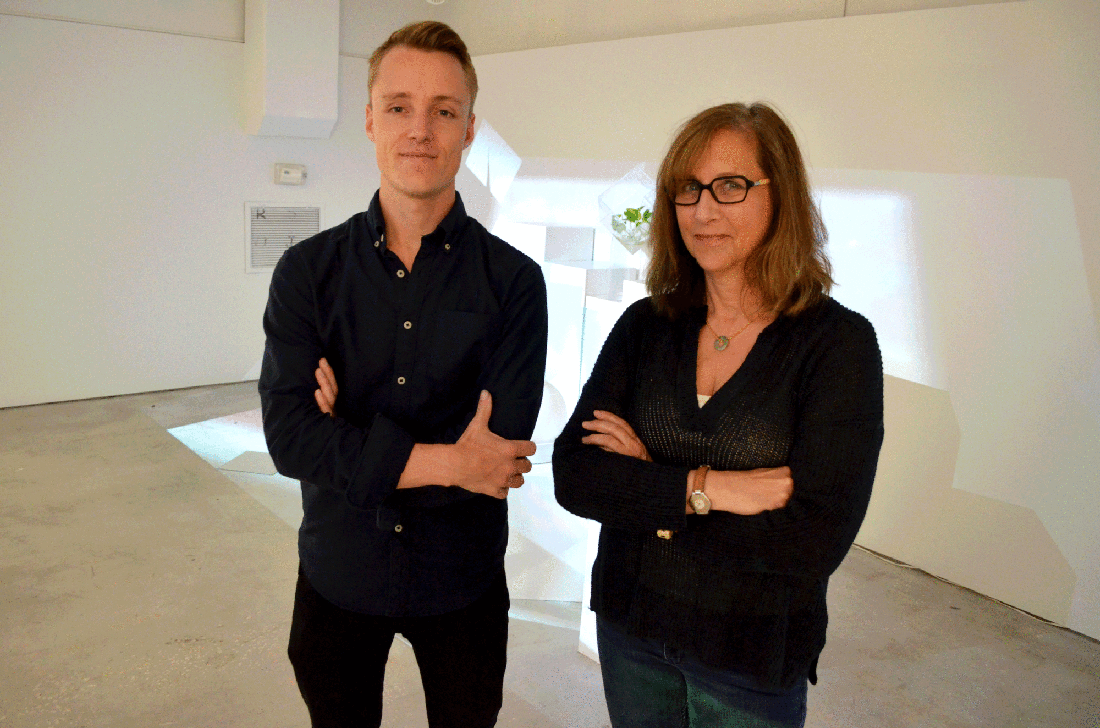- July 26, 2024
-
-
Loading

Loading

Dustin Juengel isn’t afraid to take risks. In fact, when he began working as exhibition curator at Art Center Sarasota in April 2015, it was one of his main focuses.
For him, taking chances is a good thing. It’s all about the possibility for failure — without it, it’s difficult for an artist to grow. In curating Art Center Sarasota’s exhibitions, he wanted to challenge local artists to embrace that idea. He wanted them to be more experimental in their work, to use that sense of uncertainty as a tool to inform their creative processes.
In the last year and a half, the Ringling College professor and alumnus, along with Director Lisa Berger, have used this mindset to make strides toward creating a communal space where local artists can push their boundaries.
The art center recently announced its 2016-2017 season, “Common Ground.” Looking at the exhibition schedule, Berger and Juengel have no intention of easing up.
“It’s often underestimated the role that the exhibition space can play in the creative process,” says Juengel. “I wanted our shows to be more of an opportunity for the participating artists, where the work can be created for the space, not just forced into an existing space. Let’s try something — let’s take a chance and see what happens.”
He recalls installing #postdigital, a technology-centric exhibition that opened this May, which he considers to be a defining moment in Art Center Sarasota’s evolving vision.
While installing a series of LCD monitors that would display a collection of glitch art, he posed a question to the artists:
What if, instead of using two screens, they used six: two large ones and four smaller ones? And instead of running the cables neatly along the ground and out of sight, what if they were intentionally exposed, draped throughout the room to become part of the installation itself?
“They said, ‘We didn’t know we could do that,’” says Juengel. “I said, ‘Why couldn’t you? We can do almost anything we want here.’”
The suggestion spurred a new set of challenges for the artists. But for Juengel, that’s a good thing. It offers a valuable lesson.
“They had to really sit down and figure out how to make this thing work,” he says. “It becomes a challenge. You’re not showing off work you created in your studio, where no one sees your mistakes — it’s work that needs to be figured out in that space. As an artist, the work isn’t done when you know you have an exhibition — that’s when it starts.”
Everyone grows
As director of the art center, Berger says one of her biggest goals is to bring the visual-arts community together. After all, she says, a vibrant, collaborative visual-art community is one of the things that first made Sarasota an arts destination.
Working with Juengel, she says she’s been inspired by his fresh outlook and enthusiasm for diversity. Over the last year and a half, she says they’ve made a conscious effort to give more opportunities to artists living in town and allow them to take risks — something they’re uniquely positioned to do.
“We’re able to be very flexible,” says Berger. “We’re not under the same pressures as a commercial gallery, and that allows us to do work that wouldn’t be possible anywhere else. For us, it’s less about selling and more about pushing creativity. You can take a chance here with less pressure. We discourage taking the safe route. Next season is a continuation of that.”
Local visual artist Nathan Skiles says that kind of opportunity is important, not only for artists, but for an arts city as a whole. This January, he installed “Spectrum,” an exhibition in which he combined his work, along with that of Jackson Petty and Leah Rosenberg, to create an overlapping, contrasting conversation among all the individual pieces.
It was unlike anything he’d been able to do locally, and he will create Spectrum II at Art Center Sarasota in March 2017.
“When you’re not constrained to whether this is going to be a sale, it opens up the door to experiment in ways you wouldn’t ever be able to,” says Skiles. “That’s important. An art center should be a conduit between the local community, as well as both younger and older contemporary artists. This bridges that gap.”
The season kicks off in October, and Juengel says he’s looking forward to continuing to push boundaries.
“It fuels creativity,” he says. “There’s a level of excitement, which attracts a higher caliber of artist, and everybody gets pulled along for the ride. Everyone grows artistically by being engaged. I want keep taking risks and creating exhibitions that are more and more exciting.”